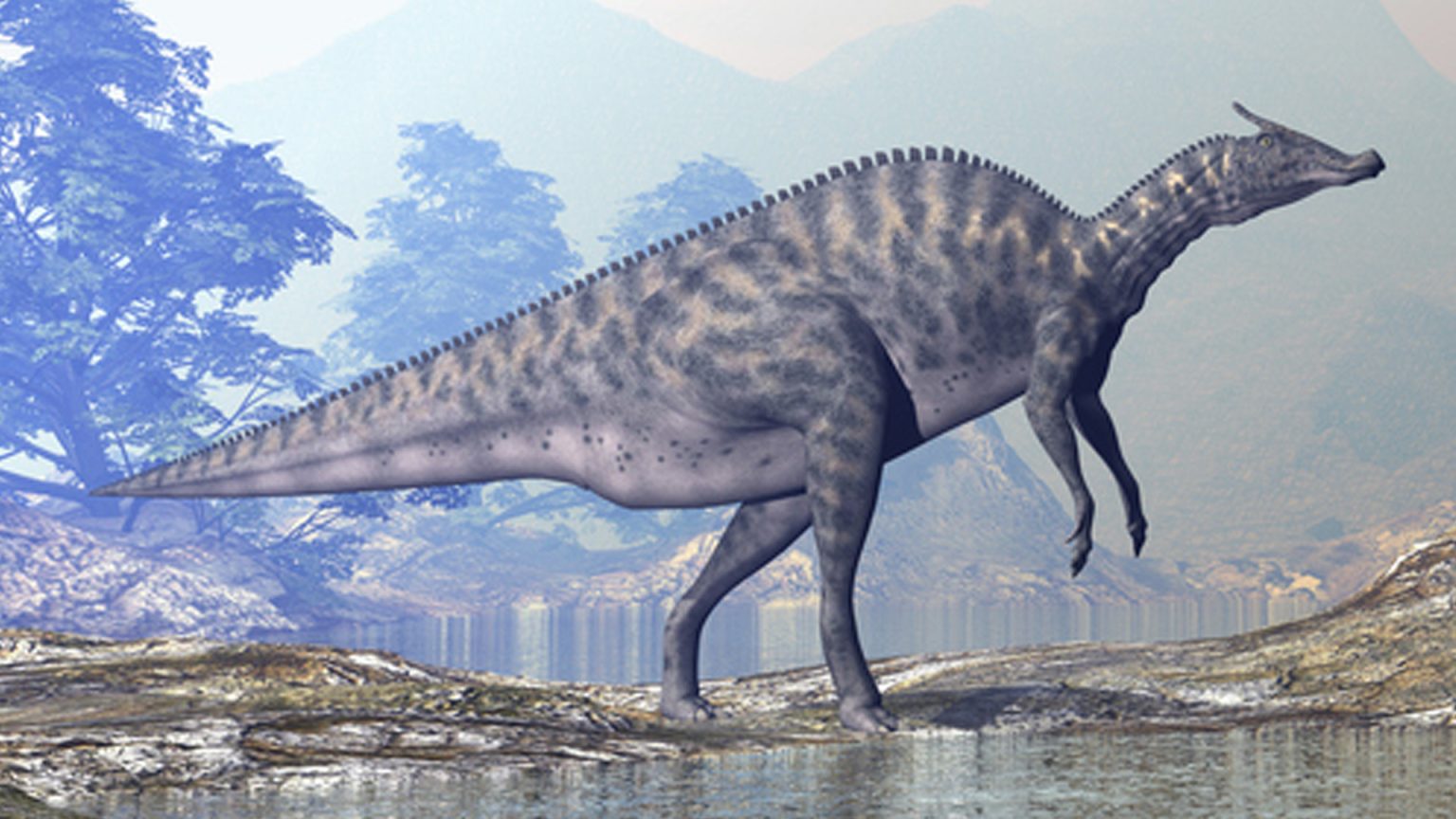The Gobi Desert, a vast expanse of arid landscape spanning across southern Mongolia and northwestern China, holds within its sands the whispers of giants long gone. Recent discoveries have unearthed colossal footprints, measuring up to three feet across, the largest ever found belonging to a bipedal dinosaur. These tracks belong to the Saurolophus, a massive herbivore that dwarfed even the formidable Tyrannosaurus Rex. Reaching lengths of up to 50 feet, this “Mongolian giant,” as researchers have dubbed it, roamed the Earth between 72.1 and 66 million years ago, during the Late Cretaceous period. The discovery of these footprints offers a tantalizing glimpse into the life of this colossal creature and fuels the hope of finding its skeletal remains nearby, further illuminating the prehistoric landscape of the Gobi.
The footprints were discovered amongst a vast collection of fossilized tracks in the western Gobi Desert. Among these were a sequence of 13 prints stretching nearly 80 feet, offering a rare opportunity to analyze the Saurolophus’s gait, speed, and potentially even its social behavior. This continuous trackway, along with 13 others identified at the site, provides valuable insights that fossilized bones alone cannot offer. Dr. Shinobu Ishigaki, the lead researcher from Okayama University of Science, emphasizes the significance of these findings, highlighting their potential to reveal details about the dinosaur’s posture, walking style, and even group dynamics. The team’s ultimate goal is to unearth the complete skeleton of the Saurolophus responsible for these massive footprints, a discovery that would undoubtedly revolutionize our understanding of this giant herbivore.
The Saurolophus belonged to a group of dinosaurs known as hadrosaurids, characterized by their duck-like bills and bulky bodies. These herbivores were equipped with “dental batteries,” complex arrangements of hundreds of teeth that allowed them to efficiently grind down plant matter. The largest hadrosaurid skeleton discovered to date belongs to the Shantungosaurus, unearthed in China’s Shandong Province. The Gobi Desert footprints suggest the possibility of an equally massive Saurolophus specimen awaiting discovery, potentially rivaling or even exceeding the size of the Shantungosaurus. This prospect excites paleontologists, who believe that the Gobi Desert may hold the key to unlocking further secrets of this giant dinosaur.
The first Saurolophus remains were discovered in Canada in 1911, with a near-complete skeleton currently residing in the American Museum of Natural History. These dinosaurs roamed across vast territories encompassing Asia and North America, their presence documented in locations ranging from Mongolia to Utah’s Horseshoe Canyon. The Saurolophus possessed a distinctive spike-like crest that projected upwards and backwards from its skull. While capable of bipedal locomotion, as evidenced by the Gobi footprints, it’s believed they could also move on all fours. Weighing several tons and boasting skulls measuring up to four feet in length, these were truly colossal creatures.
The discovery of these enormous footprints underscores the rich paleontological heritage of the Gobi Desert. This arid landscape has yielded a wealth of dinosaur fossils, providing critical insights into the diverse fauna that inhabited this region millions of years ago. The Saurolophus footprints are not merely isolated findings; they are part of a larger narrative that continues to unfold as researchers diligently explore this prehistoric treasure trove. Each new discovery adds another piece to the puzzle, gradually revealing a more complete picture of the dinosaurs that once dominated this now desolate landscape.
The ongoing research in the Gobi Desert holds immense promise for expanding our understanding of the Saurolophus and the late Cretaceous ecosystem. The pursuit of the Saurolophus skeleton, guided by the impressive footprints, could unveil unprecedented details about the dinosaur’s anatomy, growth, and behavior. This discovery would not only enrich our knowledge of this specific species but also contribute to a broader understanding of dinosaur evolution and the complex interplay of life in prehistoric ecosystems. The Gobi Desert, once home to these colossal creatures, now serves as a window into a lost world, offering a glimpse into the reign of giants millions of years ago.


